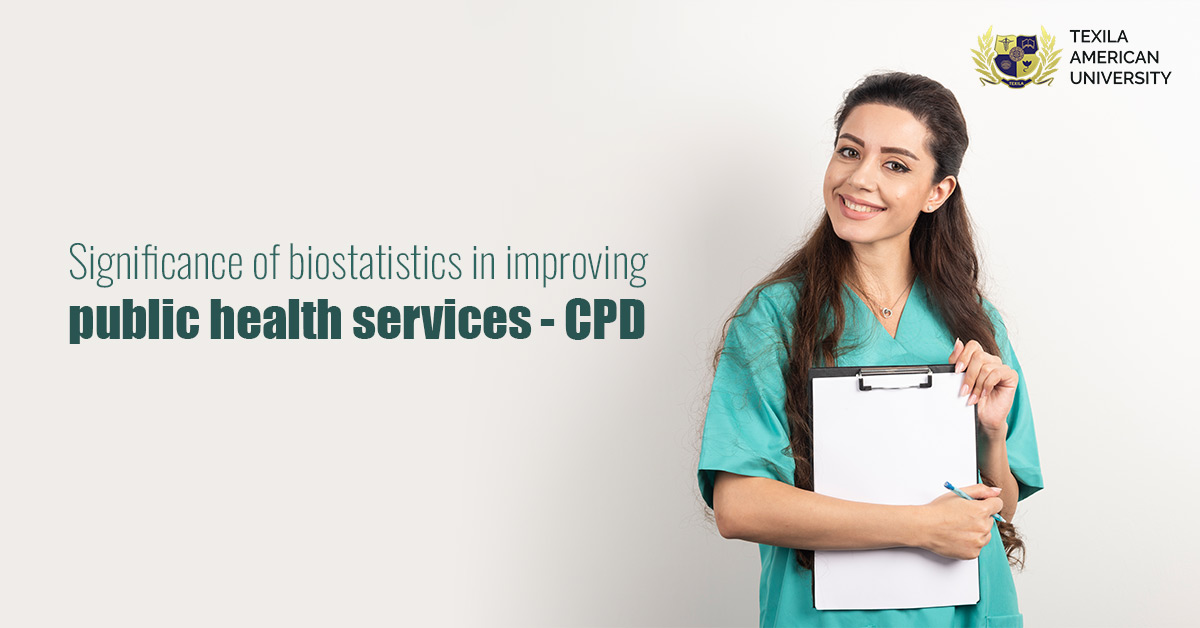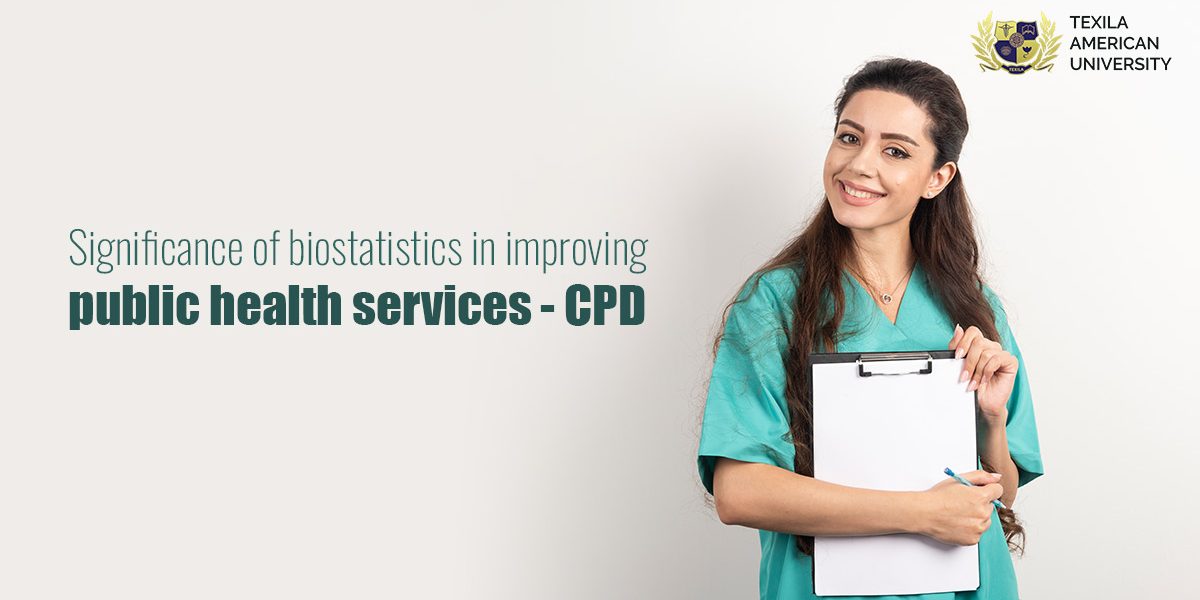Blog Summary:
Biostatistics help analyzes, interpret and convert raw research data suitable for practical applications. They are essential in clinical trials, biomedical research, and biological field studies. It helps make effective decisions, provide better healthcare and track its projected growth. It helps set up clinical research framework, data monitoring, and management, data analysis, and reporting, clinical trials, epidemiological studies, and improve patient care. According to the WHO, global mortality due to Covid-19 exceeds 14.9 million, and various public health initiatives implemented worldwide to curb its spread. A certificate in applied biostatistics program will help you to utilize statistical concepts to analyze scientific and research data, which help answer critical scientific questions. Develop the skills to process, interpret and report the results of statistical analysis of scientific data.
Biostatistics help analyzes, interpret and convert raw research data suitable for practical applications. Statistical analysis and interpretation of results are essential in the following:
- Clinical trials in healthcare
- Biomedical research and biological field studies
It would be best if you collaborated with public health officials and the biomedical and biological research team to design studies, formulate policies, train researchers, and devise new strategies to analyze and interpret research data. It significantly influences advancements in public health and biomedical science.
A certificate in applied biostatistics program will help you to utilize statistical concepts to answer critical scientific questions. Employ various tools and techniques for analyzing scientific and research data. Develop the skills to process, interpret and report the results of statistical analysis of scientific data.
Biostatisticians measure and track the impact of public and global health initiatives. You work with teams from varied fields to develop, investigate, and summarize data from clinical trials and observational studies. You help scientists analyze and distinguish data to support decisions made to promote well-being and improve patient care and the quality of life globally.
Understanding the science and statistical principles is essential as it:
- Improves the decision-making process
- Effectiveness of providing healthcare support
- Help track the projected growth of healthcare
Data Collection Methods:
Surveys, medical records, surveillance, disease registers, and peer-reviewed literature are various sources that provide health data.
- Medical records provide information on diagnoses, lab tests, doctor appointments, etc.
- Peer-review literature contains data collected using various methods like survey questionnaires and interviews. It provides data on healthcare services utilized by individuals, specific needs, development, and demographics.
- Surveillance is the systematic process of collecting data by the Center for Disease Control and Prevention (CDC), the National Center for Emerging and Zoonotic Infectious Diseases (NCEZID), and the World Health Organization (WHO).
- Diseases registers of government agencies and hospitals have information about people with specific conditions or infectious diseases.
Significance of health information in improving public health services:
The collected data helps in developing initiatives, identifying obstacles, and framing policies.
- It helps evaluate the impact of treatment by analyzing the trends with patient follow-ups after surgery, vaccination rates, and improvement in meeting health standards.
- Identify risks and communities that need health care support.
- Identify obstacles in healthcare delivery by getting patient insights.
- Modify policies based on studies.
Significance of biostatistics in clinical research:
It enables clinical researchers to analyze and interpret collected information. Biostatistics helps clinical investigation in several ways:
1) Setting up clinical research frameworks:
You support the development team by providing the necessary inputs to set up the study, and develop objectives, and data analysis methods to improve the result. You help choose the right sample size. The sample size is critical in the study since a small sample size will not provide the necessary data, and large sample sizes waste resources.
2) Data monitoring and management:
Biostatistics help devise strategies for data management and identify weak spots improving the quality of data collection strategies and analysis. It provides clear and meaningful data to support decision-making.
3) Data analysis and reporting:
After data collection, you create and define the required statistical methods, statistical methodology, type of analysis, and visual aids. It connects life sciences data and statistics and helps analyze and interpret clinical and health-related data.
4) Clinical trials:
Clinical trials are conducted to measure the effectiveness of new treatments and diagnostics. You devise clinical trials to collect valid data, and analyze and summarize results. Clinical trials help analyze clinical treatments and develop effective drugs and vaccines to prevent the spread of diseases.
5) Epidemiological studies:
Data analysis supports advancements in the field, which is vital in drafting public health policies. It studies the link between the cause, effects, and the factors that help spread the disease. It allows scientists to improve their focus and eliminate risk aspects.
6) Improving patient care:
Data analysis helps improve efficiency in healthcare systems to improve patient care and treatment outcomes and minimize the threat of ineffective treatment and patient care.
7) Trends in data:
In biostatistics, you do not always work with new data, and you need to perform analysis on previously collected data from multiple studies. Investigating the data surrounding a particular disease helps you understand the risks, lifespan, genetic factors, etc. This supports improving potential methods to improve end results.
Linking biostatistics to healthcare helps in making data-driven decisions and advancements in healthcare. It improves:
- Improve treatment outcomes of patients and provide better healthcare
- Effectiveness of healthcare programs
- Public health and drafting suitable policies
Public health initiatives in fighting the Covid-19 pandemic:
According to the WHO, global mortality exceeds 14.9 million. The various public health initiatives implemented to curb its spread include:
- Screening incoming visitors at terminals and stations
- Quarantining sick patients
- Identify and locate infected people and those who were in contact with them.
- Conducting diagnostic tests
- Educating and creating awareness on the best practices like frequent washing of hands, maintaining social distancing, and avoiding sick people
- Developing vaccines
- WHO responded by encouraging the scientific community to work jointly to identify critical research areas, and knowledge gaps from data collected from previous outbreaks and speeding up the process
TAU offers the best biostatistics certificate program. It’s a 3-month comprehensive online program with exposure to techniques utilized in statistical data analysis in generic and scientific research. Develop knowledge and skillsets in:
- Probability
- Descriptive and inferential statistics
- Correlation coefficient and regression analysis in scientific studies
- Tools and strategies for analyzing categorical data
- Basic and advanced techniques of data manipulation, research, and statistical modeling.
The course curriculum of the certificate in applied biostatistics includes the following:
- Introduction and Descriptive statistics
- Probability, Probability Distributions, and Estimation
- Hypothesis Testing
- Correlation, Regression, and Survival analysis
Career opportunities:
The demand for qualified biostatisticians is increasing. A short-term certificate in applied biostatistics enables you to work as Data Analyst, Biostatistician, Research Analyst, Data Scientist, etc. The Bureau of Labor Statistics foresees a 34% increase in employment prospects by 2024 in the field, with approximately 10,100 open positions.
Key Takeaways:
Health data provides the necessary insights that help save lives. Biostatistics links statistics to analyze and summarize health data and is critical in developing public health initiatives and policies. It positively influences public health programs and protects the well-being of global populations.
Improve your data collection and analysis strategies, summarize and present them in an easily understandable format by joining the best biostatistics certificate program with Texila CPD.
Upon completing the program with TAU, you will be able to:
- Select a suitable statistical strategy for data analysis
- Estimate the right sample size required for the study and analyze the collected information
- Probability distributions and application of probability principles in the decision-making process
- Apply descriptive and inferential statistics in scientific analysis
- Ensure validity and completeness of your statistical analysis with the necessary data
- Interpret and summarize the results meaningfully


